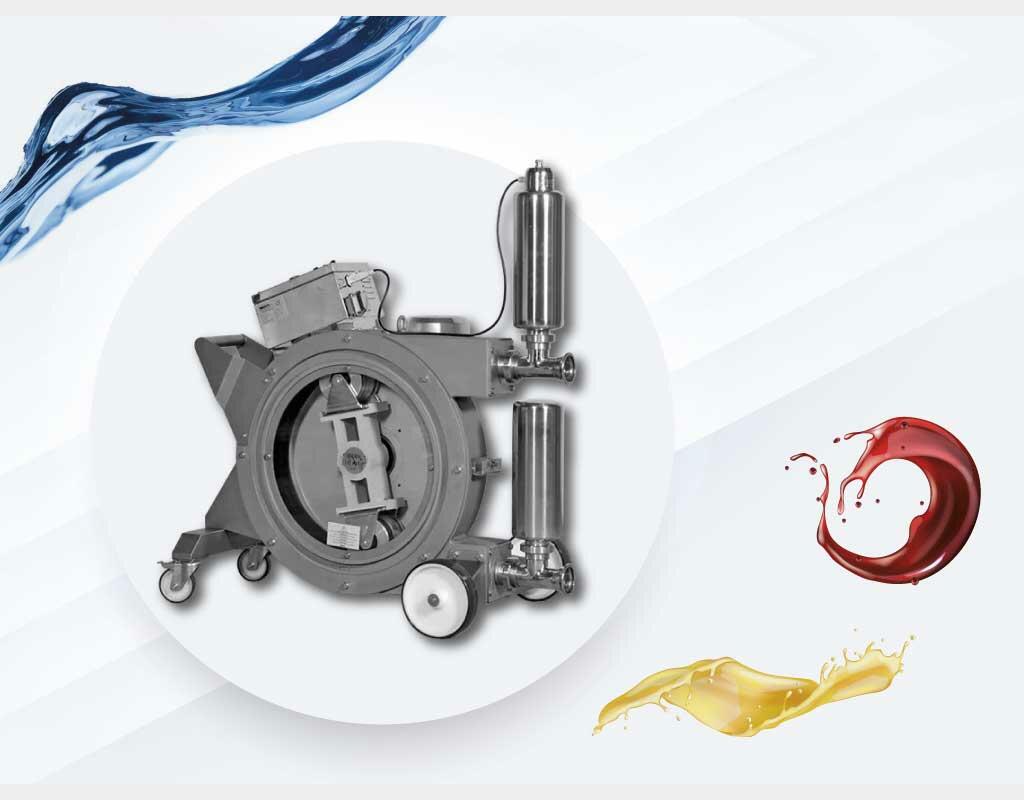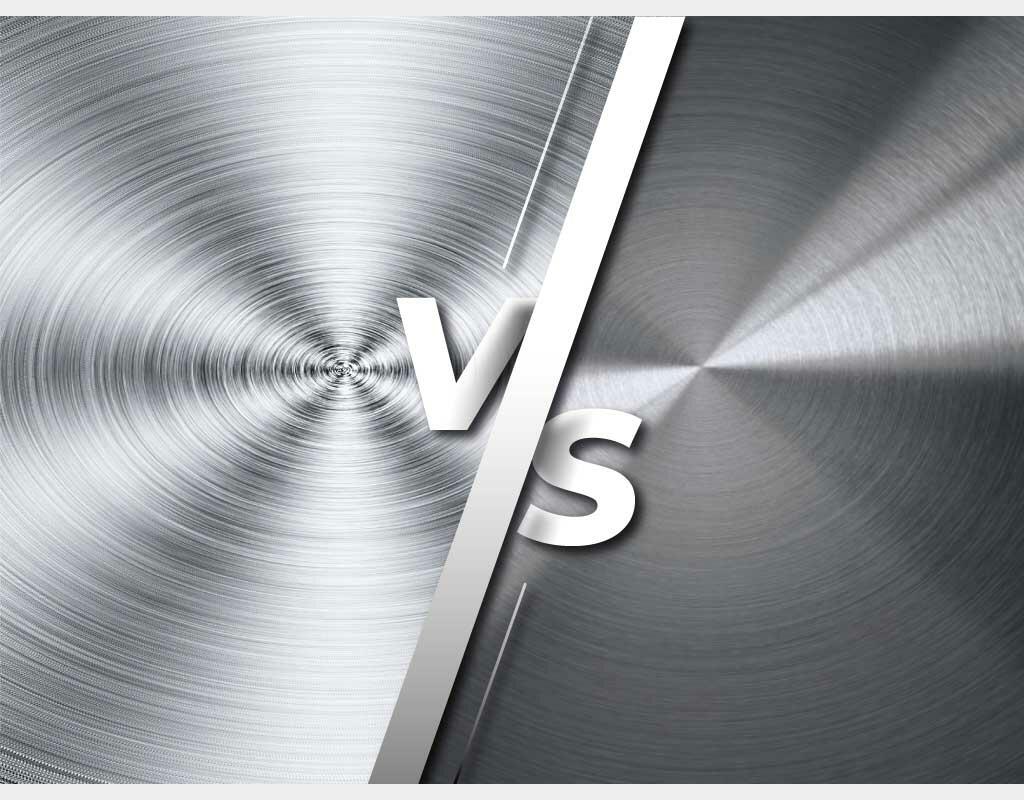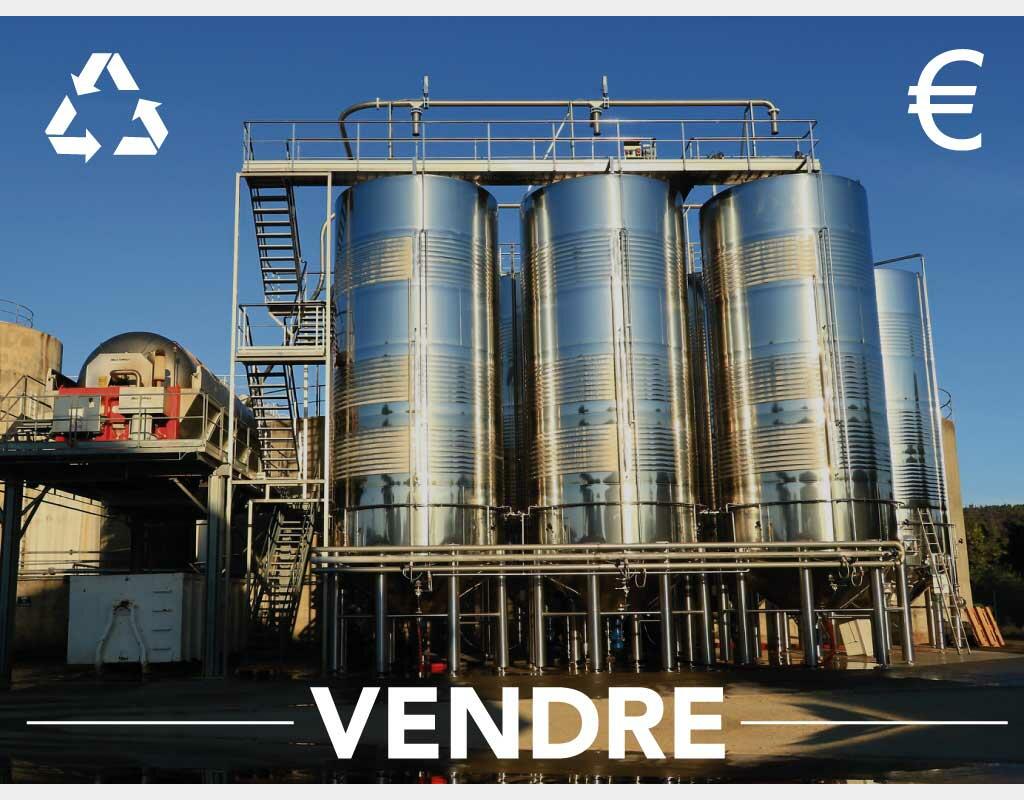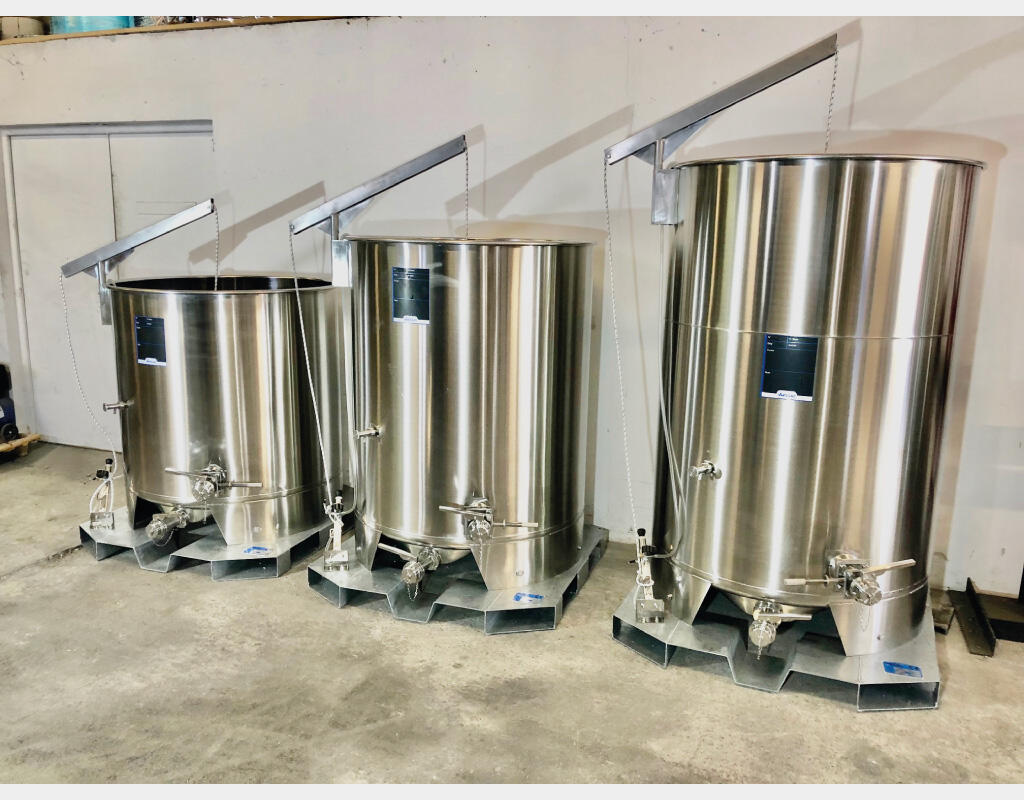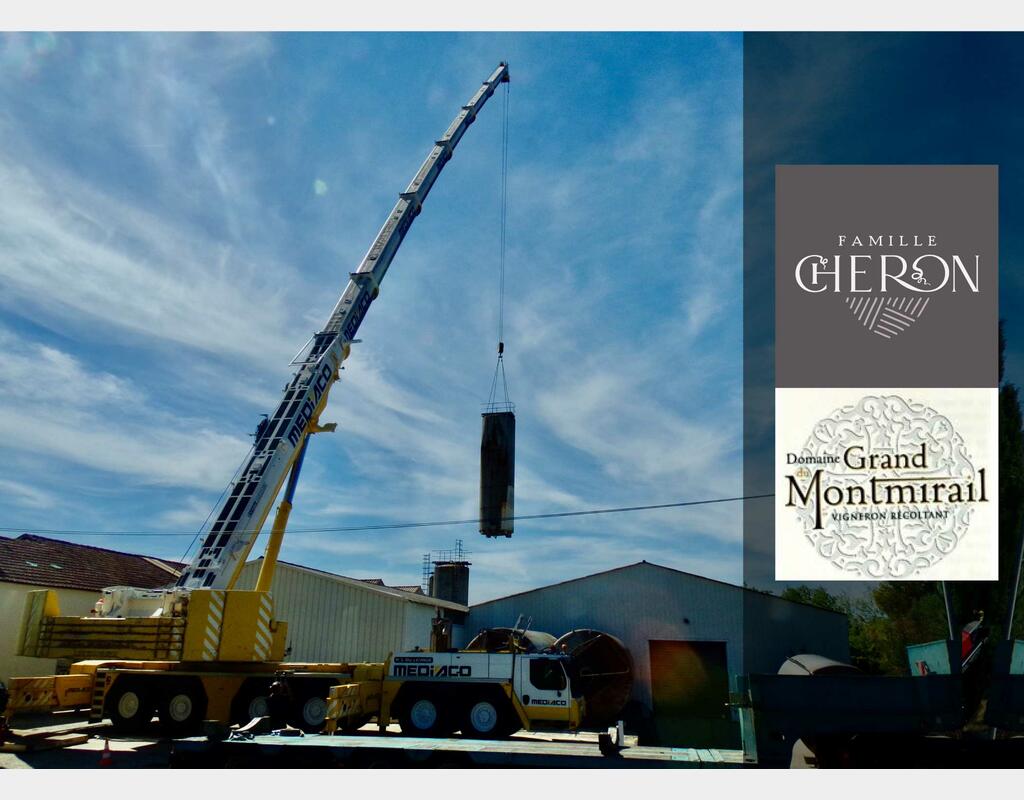Ss tanks with coil - Temperature control
Everything you need to know about stainless steel tanks with coils for the food industry
Stainless steel tanks with coils are storage equipment used in the food industry to store, mix and heat liquids. These tanks are made of stainless steel, making them hygienic, durable and corrosion-resistant. The coil, which is integrated into the tank, is a system of pipes that heats or cools the contents of the tank using steam or cold water.
→ To find out more about thermoregulation, read our article on the honeycomb system.
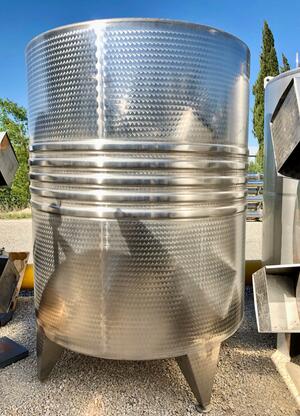 |
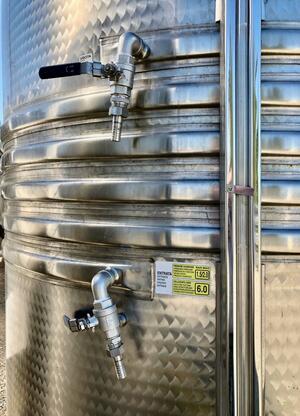 |
In this article, we explore the advantages and applications of stainless steel tanks with coils in the food industry.
The advantages of stainless steel tanks with coils
Stainless steel tanks with coils offer many advantages for the food industry, including :
- Corrosion resistance
Stainless steel is corrosion-resistant, making it ideal for storage tanks in the food industry. Stainless steel tanks with coils are also easy to clean, which is essential for ensuring food hygiene and safety. - Durability
Stainless steel tanks with coils are made from a durable, hard-wearing material, ensuring a long service life. They are also resistant to impact and damage, allowing them to be used safely in industrial environments. - Hygiene
Stainless steel tanks with coils are designed to meet the most stringent hygiene standards in the food industry. Their smooth, easy-to-clean surface prevents the proliferation of bacteria, mould and fungi, guaranteeing the quality and safety of the food stored in these tanks. - Flexibility
Stainless steel vessels with coils can be used for a variety of applications in the food industry. They can be used to store liquids, mix ingredients, heat or cool food, and much more.
Applications for stainless steel tanks with coils
Stainless steel tanks with coils are used in a variety of applications in the food industry. Here are a few examples:
- Liquid storage
Stainless steel tanks with coils are often used to store liquids such as fruit juices, milk, oils, syrups and sauces. Storage tanks can be fitted with a cooling or heating system to keep the contents at a constant temperature. - Mix of ingredients
Stainless steel tanks with coils are also used for mixing ingredients. In the food industry, mixing tanks are often used to mix ingredients such as powders, liquids, sauces and spices. The coil is used to heat or cool the contents of the vessel to the optimum mixing temperature. - Heating and cooling
Stainless steel vats with coils are equipped with a heating or cooling system to regulate the temperature of the vat's contents. The tanks can be used to heat or cool foods such as soups, sauces or fruit juices. - Cheese production
Stainless steel vats with coils are also used in cheese production. Curdling vats are fitted with a coil to heat the milk to the optimum curdling temperature. Salting vats are also equipped with a coil to heat the salted water used to salt the cheese. - Beer production
Stainless steel tanks with coils are also widely used in the brewing industry for beer production. Brewing tanks are fitted with a coil to heat the water and wort, while fermentation tanks are fitted with a coil to cool the fermented wort and maintain a constant temperature during the fermentation process. Beer storage tanks are also equipped with a coil to maintain a constant temperature while the beer matures. Stainless steel tanks with coils offer a hygienic and efficient solution for beer production, as they are easy to clean and maintain, while offering excellent protection against contamination and oxidation of the beer.
What are the differences between an outdoor coil and an indoor flag?
Among the choices to be made, that of the tank heating system is crucial. Heating is a critical stage in food processing. In this context, two options are often proposed: the external coil and the internal flag. But what are the differences between these two options? In this article, we will explore the advantages and disadvantages of each of these heating systems for stainless steel tanks in the food industry.
Outdoor coil
The external coil is an indirect heating system that uses a stainless steel tube placed on the outside of the tank. The heating fluid circulates through the coil, transferring the heat to the tank wall, which then transfers it to the product inside.
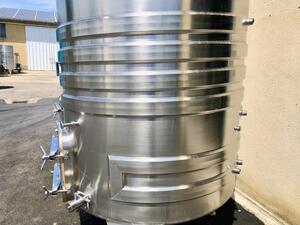 |
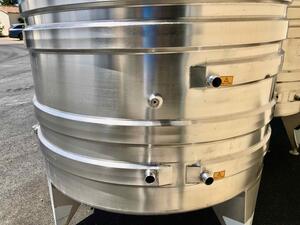 |
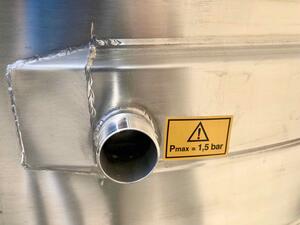 |
Advantages of the outdoor coil
- Suitable for large volumes: The outdoor coil is ideal for large-capacity tanks. It can cover a large surface area and heat large quantities of liquids evenly.
- Easy to clean: As the coil is located on the outside of the tank, it is easy to clean and maintain.
- Low cost: The outdoor coil is relatively inexpensive and easy to install.
Disadvantages of the outdoor coil
- Longer heating time: The outdoor coil may take longer to heat the product because the heat has to be transferred through the vessel wall.
- Risk of contamination: The heating fluid may come into contact with the outside environment, leading to contamination of the product in the event of a leak.
- Difficulty regulating temperature: The external coil does not allow precise regulation of the product temperature, as the temperature of the heating fluid has to be adjusted to reach the desired product temperature.
Internal flag
The internal flag is a direct heating system that uses a stainless steel tube placed inside the tank. The heating fluid circulates inside the flag, directly heating the product inside.
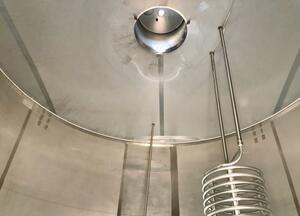 |
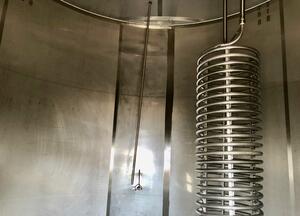 |
Advantages of the internal flag
- Shorter heating time: The internal flag heats the product more quickly because the heat is transmitted directly.
- Precise temperature control: The internal flag allows precise control of the product temperature, as the temperature of the heating fluid can be precisely adjusted.
- Low risk of contamination: As the internal flag is located inside the tank, there is less risk of contamination.
- Greater energy efficiency: The inner flag uses less energy to heat the product because the heat is transmitted directly.
Disadvantages of the internal flag
- Suitable for small volumes: The internal flag is best suited to small and medium capacity tanks. For large volumes, it can be difficult to heat the entire product uniformly.
- Difficulty of cleaning: The inner flag is more difficult to clean than the outer coil, as it is located inside the tank.
- High cost: The indoor flag is more expensive than the outdoor coil, due to its more complex design and manufacture.
Comparison between the external coil and the internal flag
Here is a comparison of the characteristics of the outer coil and the inner flag to help you choose the best option for your stainless steel tank in the food industry:
- Capacity: The outdoor coil is suitable for large volumes, while the indoor flag is more suitable for small and medium volumes.
Energy efficiency: The inner flag is more energy efficient than the outer coil, as the heat is transmitted directly to the product. - Temperature control: The internal flag allows precise control of the product temperature, whereas the external coil can be more difficult to control.
- Risk of contamination: The internal flag presents less risk of contamination than the external coil.
- Cost: The outdoor coil is less expensive than the indoor flag.
Ultimately, the choice of heating system depends on the specific needs of your business. It is important to consider factors such as tank capacity, energy efficiency, risk of contamination and cost when making your decision. Whatever the choice, the use of an appropriate heating system can help to improve the quality and efficiency of production in the food industry.
→ Discover the themoregulated tanks available in stock
Don't hesitate to contact us to discuss your project and analyse together the best temperature-controlled tank solution for the profitability of your production.

